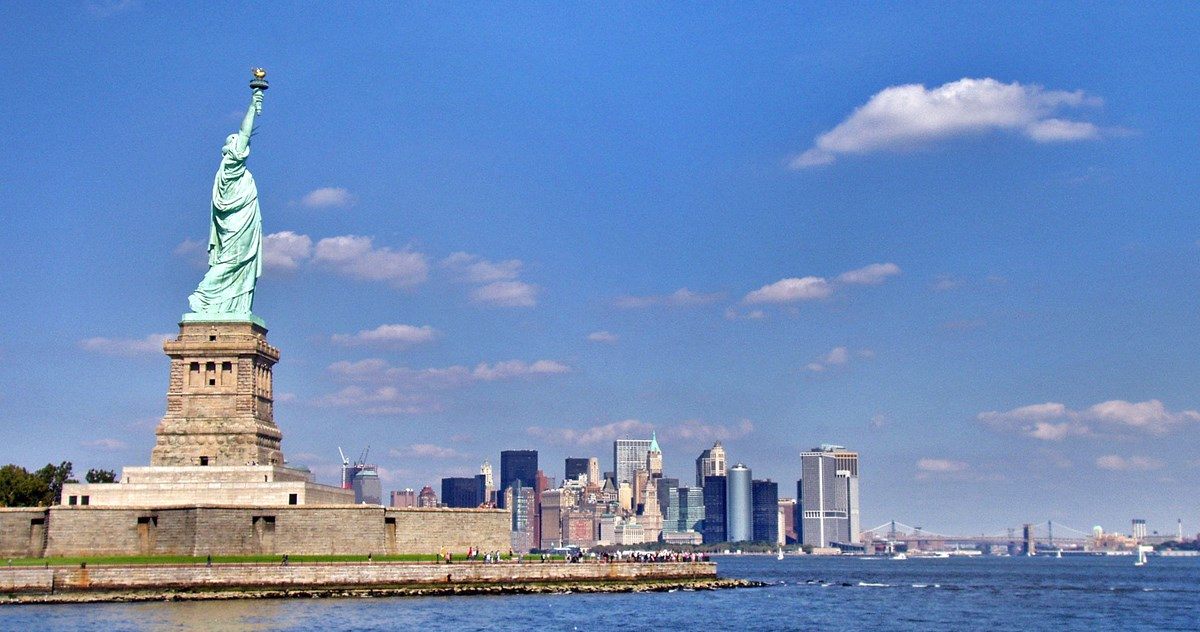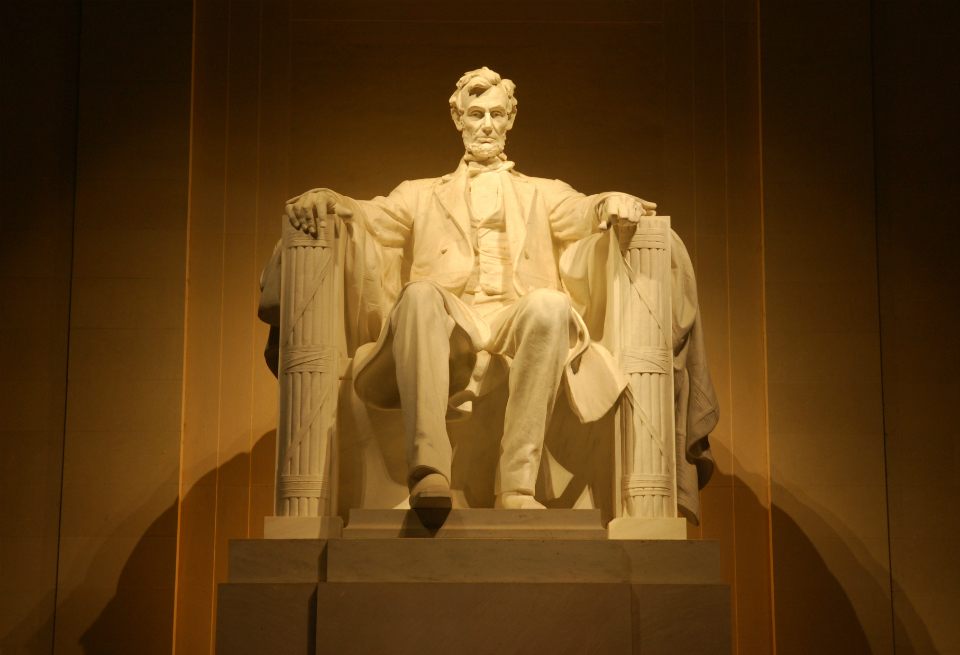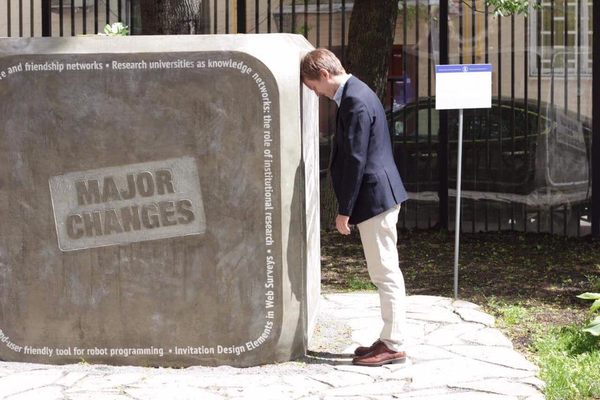The American History of Protestors Climbing Monuments
When politicians go low, activists go high.

On the afternoon of Independence Day, Therese Okoumou started climbing up the base of the Statue of Liberty and perched by Lady Liberty’s green feet. From a short distance away, on the Staten Island ferry, she looked like a person-sized speck at the bottom of the massive statue. The island was evacuated, and for hours, she refused to come down, until police scaled the monument and removed her.
Okoumou had earlier taken part in a protest organized by the group Rise and Resist against the Trump administration’s immigration policies, and while on the statue, she mentioned the children who have been separated from their families in Texas. Her climb appears to have been a continuation of her protest against these policies, separate from what Rise and Resist had planned.
Climbing national monuments is a civil crime: Okoumou will be charged with trespassing and obstruction of government administration in federal court. It’s become a tactic of civil disobedience, used by activists to draw attention to their causes in dramatic fashion. Here’s a short history of American activists climbing monuments for a cause.
Statue of Liberty
Okoumou is not the first protestor to scale Lady Liberty: On May 10, 1980, two others, Edwin Drummond and Steven Rutherford, chose the same tactic. They aimed to speak out against the imprisonment of Elmer “Geronimo” Pratt, a member of the Black Panther Party who had been charged with murder. Many, including Drummond and Rutherford, believed Pratt had been framed due to his political views.

Drummond was a seasoned protest climber: He had already ascended Nelson’s Column in London to challenge apartheid, and San Francisco’s Grace Cathedral, also in support of Pratt. Rutherford was a little less experienced: Most of his brushes with height came from his day job as a house painter. According to the New York Daily News, the two took a tour ship to Liberty Island and an elevator to the statue’s base. They then attached “special mountain-climbing suction cups” to their boots and headed upwards.
The climbers clambered over Lady Liberty’s feet and the bottom of her vestments. By the early afternoon, they had reached the statue’s posterior, where they put up a banner that read “LIBERTY WAS FRAMED. FREE GERONIMO PRATT.” The two stayed on the statue overnight, sleeping in “a fold of the statue’s toga,” the New York Times reported. They were originally charged with criminal trespass and property damage, but the charge was downgraded to a misdemeanor. In 1997, Pratt’s conviction was vacated, and he was freed.

Mount Rushmore
In August 1970, 23 activists with the group United Native Americans climbed to the top of Mount Rushmore, unfurled a sign that read “Sioux Indian Power,” and set up camp. They were protesting the U.S. government’s failure to uphold an 1868 treaty. As more protestors flocked to the site, it was occupied for months, until the cold weather of November forced them to leave. The next year, 40 activists with the American Indian Movement climbed the monument again; this time they were removed after 12 hours, with 20 of them arrested.
Mount Rushmore has remained an icon for protestors: In 2009, 11 members of Greenpeace made it up the monument and hung a banner by Abraham Lincoln’s face urging leaders to act to stop climate change.

Gateway Arch
When St. Louis’s Gateway Arch was first built, the company in charge of its construction didn’t hire any African-American workers or contractors. So in July 1964, two activists, a black aerospace manufacturer named Percy Green and a white college student named Richard Daly, snuck into the construction site and climbed an emergency ladder that led up the north leg of the Arch.
At that point, the giant parabola was about halfway completed, and each side jutted 300 feet into the air. From their perch, Green and Daly “used binoculars to exchange stares with police officers on the ground 100 feet below,” the St. Louis Post-Dispatch wrote. At the base, 15 picketers marched with signs demanding skilled jobs for black workers. Above them, the construction workers continued to build.
Green and Daly descended later that day, around 5:30, and were promptly arrested. Green was later fired from his aerospace manufacturing job and sued the company for racial discrimination, a case that eventually made its way to the Supreme Court (he won). As of 2011, there was a photograph of Green hanging in a historical exhibit inside the arch.

Lincoln Memorial
In 2007, two members of the U.K. organization “Fathers 4 Justice” climbed up the Lincoln Memorial, stood on Abe’s knees, and held a banner that read “For the Fathers Of the Nation.” One of them was dressed as Captain America, the other as Batman. They were arrested by a SWAT team.
Washington Monument
One iconic American monument has so far eluded protest climbs, or climbs of any sort: the Washington Monument. In 1912, the famous stuntman Rodman Law, otherwise known as the “Human Fly,” promised to scale the obelisk. As Law had recently parachuted off the Statue of Liberty, many took him at his word. The New York Times reported that “5,000 normal citizens of Washington went clamoring down to the Washington Monument” and that “every roof that commenced a view… was jammed.”
The spectators were thrilled to spot a dark shape that appeared to be slowly advancing up the tower. But eventually—after Congressmen and police had sped over to the tower—the dark shape was identified: It was a water stain. Some climbs are just too good to be true.









Follow us on Twitter to get the latest on the world's hidden wonders.
Like us on Facebook to get the latest on the world's hidden wonders.
Follow us on Twitter Like us on Facebook